Mountain laurel (
Kalmia latifolia) is a delightful East Coast native plant for the woodland garden. It can be found in the wild on mountainsides throughout the Appalachians, where it grows lush and loose, painting the slopes with dark green leaves and pops of white-pink flowers. Bring this lovely shrub to your garden, where it will stay evergreen through winter and deliver the gift of exquisite flowers from late spring to early summer.
Browse more native plants by region
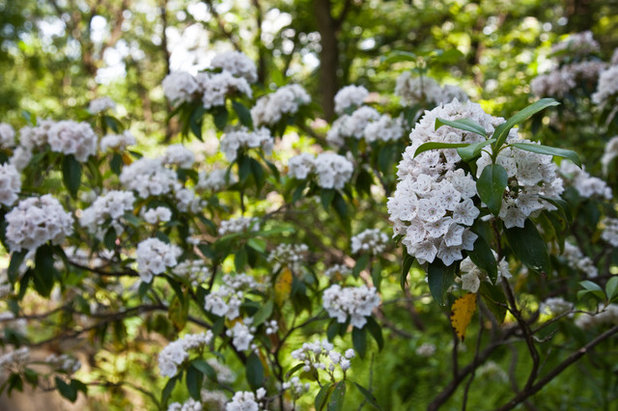
Matthew Cunningham Landscape Design LLC
Botanical name: Kalmia latifoliaCommon names: Mountain laurel, calico shrub, kalmia
Origin: Native to the edges of forests and open woods in the eastern United States, from Mississippi and Florida north to Maine
Where it will grow: Hardy to
minus 30 degrees Fahrenheit, or minus 34.4 degrees Celsius (USDA zones 4 to 9; find your zone)
Water requirement: Low once established; prefers cool, rich, well-drained acidic soil; does not tolerate clay soil
Light requirement: Partial shade
Mature size: 5 to 15 feet tall and wide; can be grown as a shrub or small tree
Benefits and tolerances: Deer-, rabbit- and shade-tolerant
Seasonal interest: Blooms in late spring to early summer; evergreen leaves through winter
When to plant: Spring or fall
Caution: All parts of this plant are poisonous; keep away from children and pets.
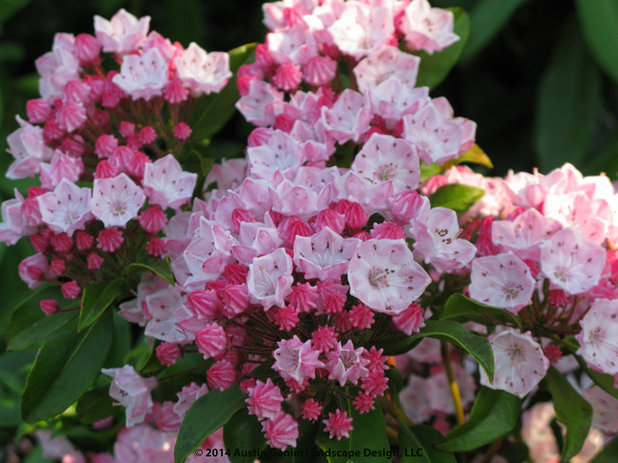
Austin Ganim Landscape Design, LLC
Distinguishing traits. Mountain laurel is a large, broadleaf evergreen shrub with stunning showy flowers in late spring to early summer. Its overall form is similar to that of azalea, with dense growth that develops into gnarly or twisting branches with age. The leaves are oblong and leathery, with a deep glossy green color, and grow up to 5 inches long.
The flowers really steal the show in May and June, depending on the climate; their pentagon-shaped heads of erect petals are reminiscent of folded origami paper. The flower colors naturally occur across a range of white to pastel pink to a deep blush pink.
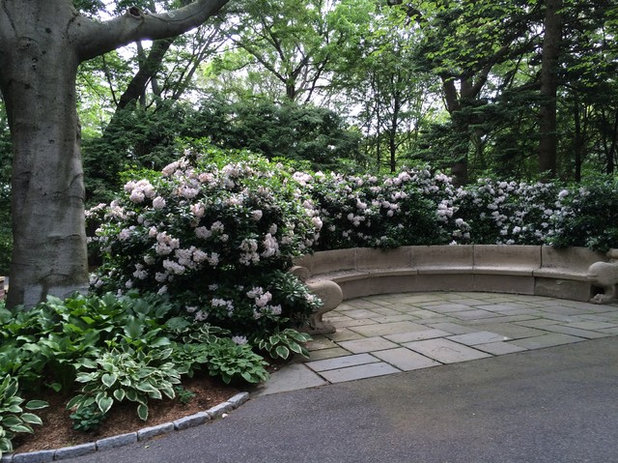
Garden Gallery LLC
How to use it. Mountain laurel is a truly gorgeous ornamental shrub that is best used in groups as a naturalistic massing under existing tall trees, as a backdrop in the border garden or as a hedge, as it’s shown here. It’s a great fit for a woodland garden when it mimics its natural setting as an understory shrub or along the forest margin. It can also be used in formal gardens as an evergreen massing shrub in a courtyard or next to a walkway.
Better blooms will occur with just a touch of sun, preferably a few hours in the morning. In very deep shade, the overall growth habit will be more open and twisted.
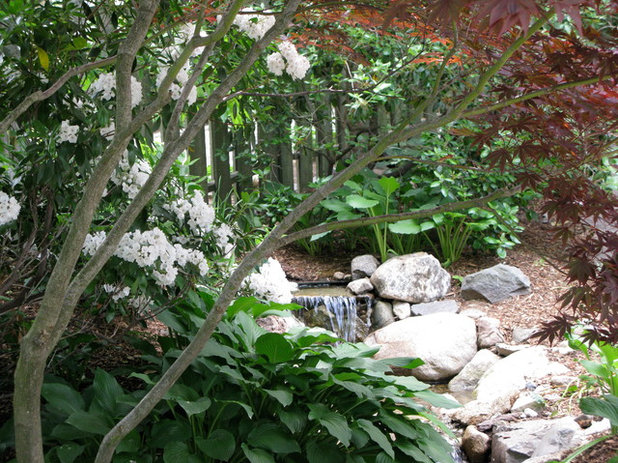
Natalie DeNormandie
Mountain laurel, blooming white, peeks out over a water feature in this partially shaded garden. It mixes nicely with hostas and an arching Japanese maple (
Acer palmatum).
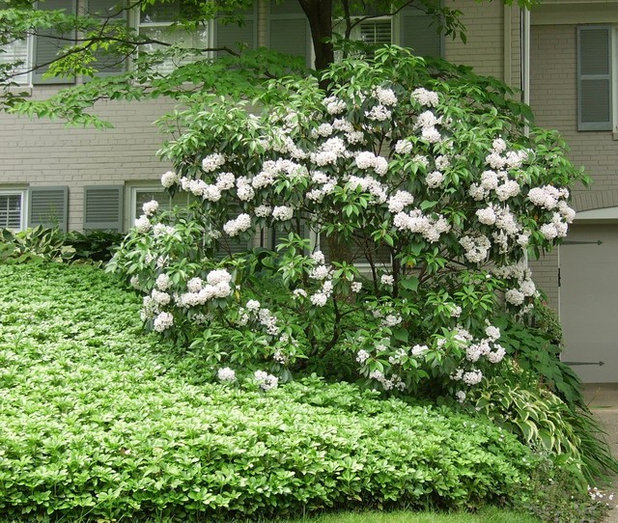
Marjorie Smith Meadows Farms Landscape Designer
Planting notes. Mountain laurel is in the heath family, which means it is an ericaceous, or acid-loving, plant. It requires acidic soil and fits in with blueberries, azaleas and heaths that also prefer acidic soil. Test your soil pH with a kit from the hardware store so that you know for sure that you’re planting your mountain laurel in the right place. As with other woody shrubs, it’s best to plant mountain laurel in autumn or spring once the soil has thawed.
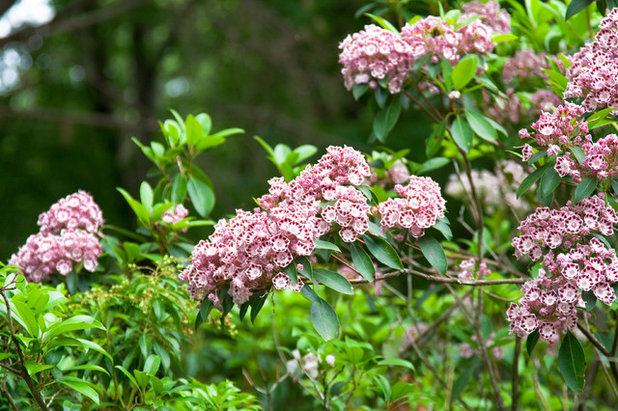
Matthew Cunningham Landscape Design LLC
Selected cultivars. Mountain laurel comes in a great selection of more than 75 different cultivars. Most of them have variations on the flower color and patterning; a few have also been cultivated as smaller specimens.
- ‘Carousel’ has a deep purple star pattern inside the flowers.
- ‘Ostbo Red’ is popular at nurseries for its bright red buds that open to dark pink flowers.
- ‘Sarah’ has a similar color to ‘Ostbo Red’ but is compact at less than 5 feet tall.
Browse more native plants by region





